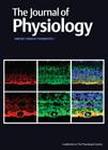版权所有:内蒙古大学图书馆 技术提供:维普资讯• 智图
内蒙古自治区呼和浩特市赛罕区大学西街235号 邮编: 010021

作者机构:Australian Natl Univ John Curtin Sch Med Res Div Neurosci Canberra ACT 2601 Australia
出 版 物:《JOURNAL OF PHYSIOLOGY-LONDON》 (生理学杂志)
年 卷 期:1999年第521卷第2期
页 面:507-516页
核心收录:
学科分类:0710[理学-生物学] 1001[医学-基础医学(可授医学、理学学位)] 07[理学] 071003[理学-生理学]
主 题:腺苷三磷酸/药理学 年龄因素 小动脉/生理学 氯化镉/药理学 咖啡因/药理学 钙/药理学 辣椒辣素/药理学 中枢神经系统刺激剂/药理学 环AMP/药理学 二核苷磷酸类/药理学 酶抑制剂/药理学 非洛地平/药理学 福司柯林/药理学 缝隙接合部/生理学 虹膜/血液供给 膜电位/药物作用 膜电位/生理学 肌 平滑 血管/生理学 NG-硝基精氨酸甲酯/药理学 神经肽Y/拮抗剂和抑制剂 神经肽Y/药理学 肽类 环/药理学 周期性 血小板聚集抑制剂/药理学 磷酸吡哆醛/类似物和衍生物 磷酸吡哆醛/药理学 大鼠 Wistar 兰尼碱/药理学 毒胡萝卜内酯/药理学 血管收缩/生理学 血管舒张药/药理学 动物 女(雌)性 男(雄)性 大鼠
摘 要:1. Mechanisms underlying spontaneous rhythmical contractions hare been studied in irideal arterioles of the rat using video microscopy and electrophysiology. 2. Rhythmical contractions (4 min(-1)) were more common during the second and third postnatal weeks and were always preceded by large, slow depolarizations (5-40 mV). 3. Spontaneous contractions were unaffected by tetrodotoxin (1 mu M), neurotransmitter receptor antagonists, the sympathetic neurone blocker, guanethidine (5 mu M) or sensory neurotoxin, capsaicin (1 mu M). 4. Stimulation of sensory nerves inhibited spontaneous activity and this was not prevented by L-NAME (10 mu M). 5. L-NAME (10 mu M) caused an increase in frequency of spontaneous contractions, while forskolin (30 nM), in the presence of L-NAME, abolished spontaneous, but not nerve-mediated, contractions. 6. Spontaneous activity was not affected by felodipine (1 nM) or nifedipine (1 mu M), but was abolished by cadmium chloride (1 mu M) or superfusion with calcium-free solution. 7. Caffeine (1 mM), thapsigargin (2 mu M) and cyclopiazonic acid (3 mu M), but not ryanodine (3 mu M), abolished spontaneous and nerve-mediated contractions. After preincubation in L-NAME (10 mu M), cyclopiazonic acid abolished spontaneous contractions only. 8. Spontaneous depolarizations and contractions were abolished by 18 alpha-glycyrrhetinic acid (20 mu M) 9. Results suggest that spontaneous rhythmical contractions are myogenic and result from the cyclical release of calcium from intracellular stores, without a contribution from voltage-dependent calcium channels. Intercellular coupling through gap junctions appears to be essential for co-ordination of these events which could be modulated by nitric oxide and increases in cAMP. The possibility that different intracellular stores underly spontaneous and nerve-mediated contractions is discussed.